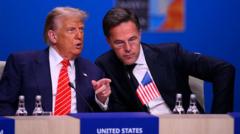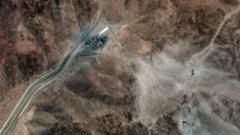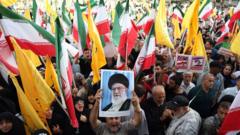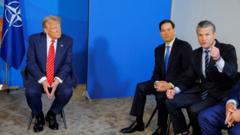CIA Director John Ratcliffe asserts that key Iranian nuclear sites have been "severely damaged" but not entirely eliminated, contrasting with a leaked Pentagon report that suggests a minimal impact.
US Intelligence Disputes Iran Nuclear Strike Impact: Damage Assessment Diverges
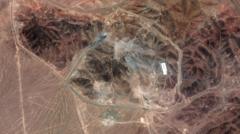
US Intelligence Disputes Iran Nuclear Strike Impact: Damage Assessment Diverges
In the wake of US strikes on Iranian nuclear facilities, conflicting assessments emerge regarding the extent of the damage inflicted.
The US military operation targeting Iran's nuclear program involved complex intelligence evaluations, underscoring the ongoing tensions between the nations amid a fragile ceasefire in the region.
On Wednesday, CIA Director John Ratcliffe provided an analysis that US military strikes had severely compromised Iran's nuclear infrastructure. He stated that while significant damage was done, Iran's nuclear program had not been completely eradicated. This assessment diverges starkly from a recent leaked preliminary intelligence report from the Pentagon, which claimed that essential components of Iran's nuclear program remained intact after the bombings, igniting frustration and criticism from President Donald Trump.
President Trump insisted on social media that the airstrikes had “obliterated” Iran’s nuclear facilities, calling the media's characterization of the events inaccurate. As the conflict persists, Trump announced an upcoming news conference involving Secretary of Defense Pete Hegseth and military officials, aiming to clarify the US position on the situation and support for American military personnel.
While in The Hague for a NATO summit, Trump reiterated his conviction regarding the "severe" nature of the attacks and disclosed his intention to negotiate a commitment from Iran to halt its nuclear ambitions in a potential meeting next week—though Iran has not acknowledged any talks.
The CIA's assessment cited new intelligence indicating that several major Iranian nuclear sites have been destroyed and would require years for reconstruction. During the military operation, approximately 125 aircraft targeted three primary Iranian nuclear facilities, leading to observations of new craters and damage in satellite images over the sites, including Fordo and Isfahan.
However, a leaked assessment from the Pentagon’s Defense Intelligence Agency suggested that the bombings would only delay Iran's nuclear capabilities by a few months, an assertion that Defense Secretary Pete Hegseth took caution with, noting the low confidence in that evaluation. The multifaceted nature of intelligence gathering in the region complicates predictions about Iran's ability to respond or recover.
UN nuclear watchdog chief Rafael Grossi remarked that there is a possibility that Iran may have relocated some of its highly enriched uranium in response to the attacks. In contrast, a spokesperson for Iran’s foreign ministry confirmed the damage but did not detail the specifics, echoing the sentiment of Mehdi Mohammadi, an adviser to the Iranian parliament chairman, who claimed no irreversible damage had occurred.
As discussions continue regarding Iran’s nuclear ambitions, the landscape remains intricate, characterized by both military action and diplomatic maneuvers. The contrasting reports from US intelligence agencies illustrate the difficulty of attaining a clear understanding amidst the ongoing geopolitical challenges in the region.
On Wednesday, CIA Director John Ratcliffe provided an analysis that US military strikes had severely compromised Iran's nuclear infrastructure. He stated that while significant damage was done, Iran's nuclear program had not been completely eradicated. This assessment diverges starkly from a recent leaked preliminary intelligence report from the Pentagon, which claimed that essential components of Iran's nuclear program remained intact after the bombings, igniting frustration and criticism from President Donald Trump.
President Trump insisted on social media that the airstrikes had “obliterated” Iran’s nuclear facilities, calling the media's characterization of the events inaccurate. As the conflict persists, Trump announced an upcoming news conference involving Secretary of Defense Pete Hegseth and military officials, aiming to clarify the US position on the situation and support for American military personnel.
While in The Hague for a NATO summit, Trump reiterated his conviction regarding the "severe" nature of the attacks and disclosed his intention to negotiate a commitment from Iran to halt its nuclear ambitions in a potential meeting next week—though Iran has not acknowledged any talks.
The CIA's assessment cited new intelligence indicating that several major Iranian nuclear sites have been destroyed and would require years for reconstruction. During the military operation, approximately 125 aircraft targeted three primary Iranian nuclear facilities, leading to observations of new craters and damage in satellite images over the sites, including Fordo and Isfahan.
However, a leaked assessment from the Pentagon’s Defense Intelligence Agency suggested that the bombings would only delay Iran's nuclear capabilities by a few months, an assertion that Defense Secretary Pete Hegseth took caution with, noting the low confidence in that evaluation. The multifaceted nature of intelligence gathering in the region complicates predictions about Iran's ability to respond or recover.
UN nuclear watchdog chief Rafael Grossi remarked that there is a possibility that Iran may have relocated some of its highly enriched uranium in response to the attacks. In contrast, a spokesperson for Iran’s foreign ministry confirmed the damage but did not detail the specifics, echoing the sentiment of Mehdi Mohammadi, an adviser to the Iranian parliament chairman, who claimed no irreversible damage had occurred.
As discussions continue regarding Iran’s nuclear ambitions, the landscape remains intricate, characterized by both military action and diplomatic maneuvers. The contrasting reports from US intelligence agencies illustrate the difficulty of attaining a clear understanding amidst the ongoing geopolitical challenges in the region.

